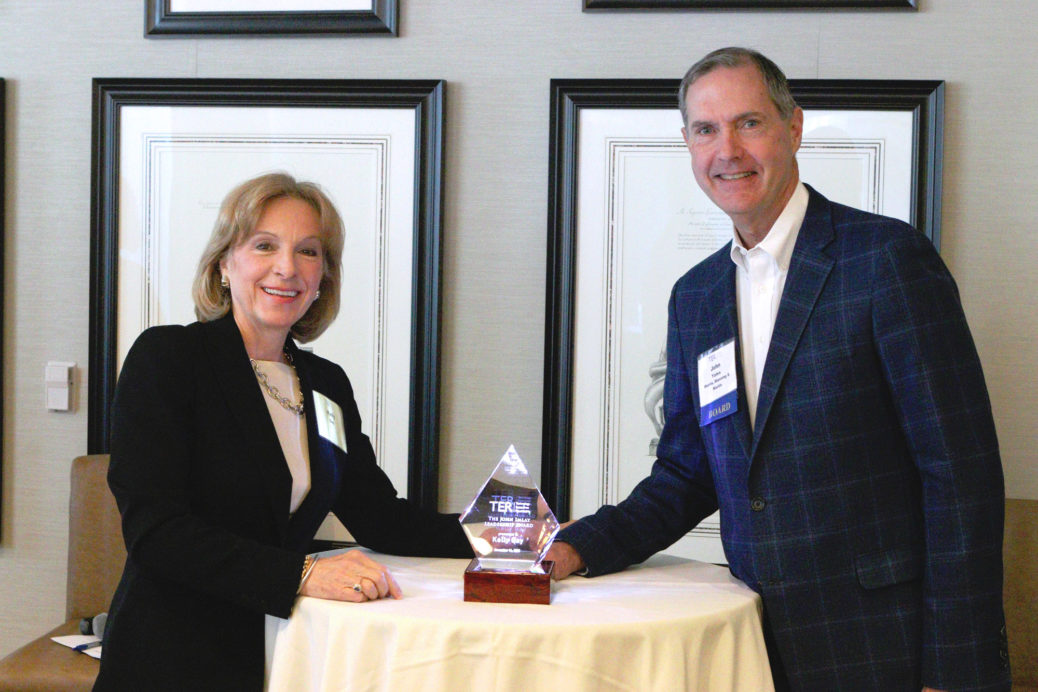
DENVER—In a packed ballroom at Educause’s annual conference on Thursday, Susan Grajek, the organization’s vice president for partnerships, communities and research, laid bare higher education’s top 10 technology issues for 2023.
“The pandemic sparked a great rethink that upended previous models of management and working,” Grajek said. “In 2023, institutional and technology leaders are ready for a new approach.”
Grajek’s speech was peppered with technology concepts such as “cybersecurity” and “privacy,” while also including numerous references to “empathy” and “humanity.”
Most Popular
Educause’s 2022 IT issues panel and higher education institutional and technology leaders identified the trends along with their implications for colleges. The report is scheduled to publish Monday. Here’s a sneak preview that highlights higher ed’s need to move from data insight to data action, develop learning-first strategies, and lead with humility.
Ensure IT Leadership Is a Full Strategic Partner
Chief information officers need a seat at college leadership tables to “facilitate a dialogue between institutional aspiration and digital possibilities,” Grajek said. When CIOs are involved in institutional decision-making from the start, they can help guide digital transformation in business and academic matters in a proactive, rather than reactive, way. They also learn more about the college’s mission, operations and culture and, as a result, are better equipped to support it.
Evolve, Adapt or Lose IT Talent
As unemployment dropped to record levels, industry has outcompeted higher education for IT talent in terms of pay, benefits, flexible work options and, in some cases, work-life balance. Moving forward, college hiring managers may need to offer compensation that may not be in line with internal standards, Grajek said.
The work culture may also need to adapt to build community among hybrid staff. To retain staff, employers will need to better accommodate employees’ shifts in personal and professional goals and also foster healthier work-life balance.
Jonathan Hardy, deputy CIO at Villanova University, would also like to see more meaningful progress in hiring with diversity, equity and inclusion in mind.
“Hundreds of schools have signed Educause’s CIO commitment on diversity, equity and inclusion statement. Where are the results?” Hardy asked, noting that more needs to be done for large-scale, systemic change.
Related Stories
Lead With Humility and Candor
Once IT employees are hired, they want clear expectations on what they will be held accountable for, and they want to be empowered to achieve it, Grajek said.
Leaders with candor hold employees accountable to a certain standard, and those with humility have compassion for their employees, according to Brian Basgen, chief information officer of Emerson College.
“These two things are not commonly held together by any individual, particularly at the same time,” Basgen said. A leader with too much compassion but not enough accountability may find that their team fails. Likewise, a leader who holds their team to high standards without compassion may face retention problems.
“Excessive workloads are burning staff out,” Grajek said. “It is time to bring capacity and commitment into alignment.”
Update Privacy and Cybersecurity Awareness
The privacy and cybersecurity landscape has changed from a decade ago, and higher education has fallen behind other industries, Grajek said.
Colleges need to update their cybersecurity and privacy awareness and training, especially given that their community members often entrust their information to institutions without sufficiently understanding how important it is or will be in the future.
Colleges’ information culture needs to “shift from ‘the more information, the better, because you never know when it will be useful’ to data minimization wherever possible,” Grajek said. This is especially true when working with third parties and given the threat of ransomware attacks.
Updated legislation that applies to higher education would help, according to Pegah Parsi, chief privacy officer at the University of California, San Diego.
“FERPA [the Family Educational Rights and Privacy Act] is from—good grief—1974,” Parsi said. “We need an update that meets the needs of today.”
Leverage Technology for Frictionless Student Experiences
Students need on-demand access to campus resources in a secure, private and accessible way, Grajek said. This will require an investment in technology systems and staff to ensure a frictionless experience when and where they need services.
Individual students should be able to define what success means to them, which may challenge institutions’ understanding of traditional student journeys. A college student’s experience should be personalized, Grajek said, and technology can help address their varying needs to blend digital and physical environments.
Leverage Data to Expand Enrollments
Data is at the heart of enrollment strategies, but many college cultures do not emphasize data, Grajek said.
Data analysts would benefit if they could interrogate data that emanated from a single source, said Karen Warren, deputy chief information officer at Wesleyan University.
“We’re pretty far from that,” Warren said. “Right now, there’s still a lot of work being done moving data around, trying to get it into suitable places where you can then extract data and do what you need to do with that data.”
Ubiquitous—or at least improved—access to broadband connectivity could help diversity and enrollment, according to Sue Traxler, assistant chancellor for learning and information technology and CIO at the University of Wisconsin at Stout.
Move From Data Insight to Data Action
When institutions convert data analytics efforts into institutional action plans, they lay the groundwork for enhancing operational efficiency and improving student success.
“The focus of data analytics needs to change from an historical approach using data to understand what’s happened to a future-oriented approach of using data to project where we’re heading,” Grajek said. Such an effort will require that leaders work with stakeholders to decide on a path forward.
Those who work with the data need to feel safe to experiment. Also, colleges may need to hire staff with specialized analytics skills for this intelligence, and those staff members may be embedded across the college.
Develop an IT Support Strategy That Works In Person and Virtually
Students and instructors now work together both in person and remotely. Employees also work from home and on campus. This means that “everything is anywhere,” Grajek said and “pandemic measures won’t suffice.”
Such an environment warrants its own IT support strategy to optimize outcomes. Colleges need a willingness to change if they are to overcome challenges in developing a robust digital campus, managing students’ high expectations, Grajek said.
Individuals across institutions need up-to-date cybersecurity and data management training. IT staff will need to optimize and simplify computer configurations for end users. Institutions need to create a productive and supportive hybrid culture that supports members of diverse communities they’ve sought to create.
“I’d want a CIO, CTO or other IT leader at a university board level, so [the institution] treats digital investment and design with the same care and attention” as physical campus designs, said Emma Woodcock, chief information officer at York St. John University, in the United Kingdom.
Develop a Learning-First Strategy, Regardless of Modality
The pandemic offered faculty a crash course in tech tools to support teaching. At the same time, ed-tech companies and universities have innovated on new tech products. Such developments could support new ways of thinking about teaching.
“Courses should be designed in a way that allow students to achieve their learning objectives using the technology tools that best get them there,” Grajek said. Flexible, interoperable options supported by technology can reduce barriers and allow more students to engage. Institutions will need to invest in supporting faculty efforts to access, experiment with and implement practices with these tools.
Manage IT Costs, Risks and Opportunities
Many colleges are facing a deferred technology maintenance problem, Grajek said. She noted that technology systems are not simply about administrative efficiency; they can provide data that may inform and impact the institution’s missions and businesses. But to make progress on this front, institutions may need to change their cultures.
“Technology leaders need to help develop an institutional culture of ‘here are all of the problems we need to address—let’s find a good solution,’” Grajek said, noting that too often, many find the tech first and let it define the problems on which to work.
With the Educause conference underway, attendees appeared glad to be together in person, even if the challenges that lie ahead are not for the faint at heart.
“It’s hard to think of a more heroic or exhausted population of professionals than those who make up the Educause community,” John O’Brien, the association’s president and CEO, said in the conference keynote. “The biggest fires have been put out, but that doesn’t extinguish the burnout and stress that sometimes continues.”








